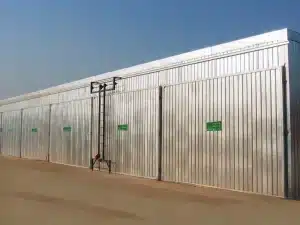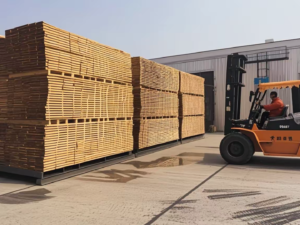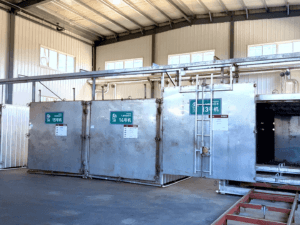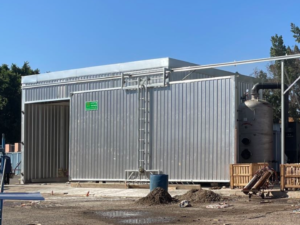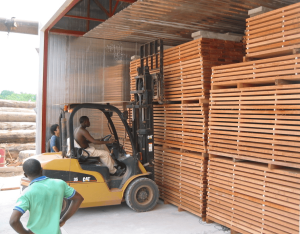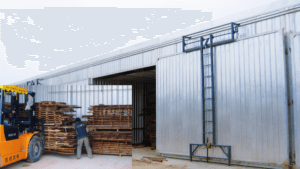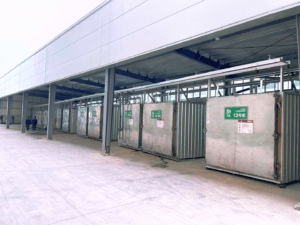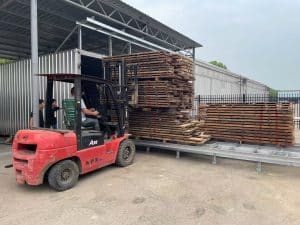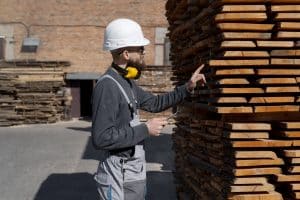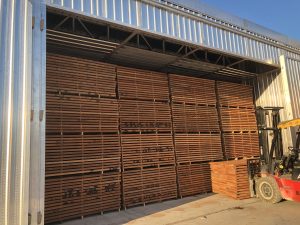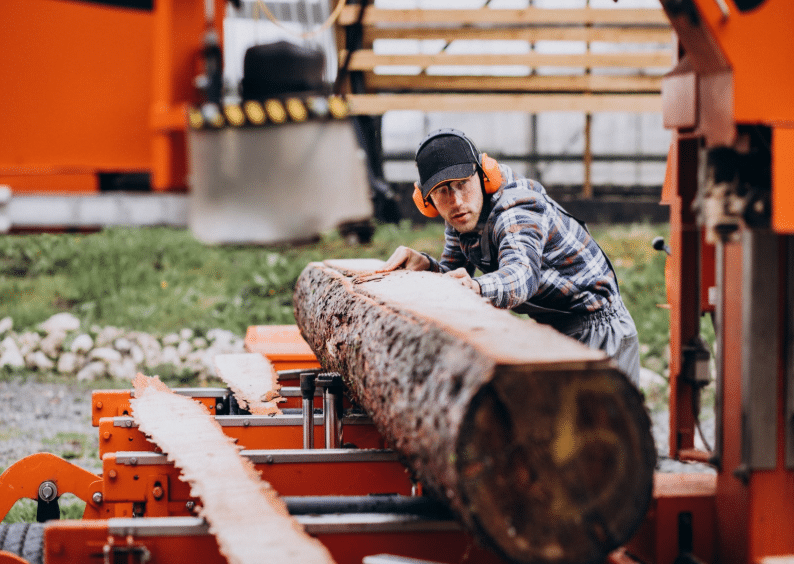
In the realm of woodworking, the role of the kiln dryers is indispensable. These advanced systems are engineered to reduce the moisture content of timber, making it suitable for a wide range of applications, from furniture production to wooden packaging materials. For Kenya buyers seeking efficient lumber drying kiln solutions, this comprehensive guide explores the essentials of kiln technology and performance we have at TechDrying for buyers. With insights from experience, particularly from China, the article examines various types of kilns, including conventional drying kilns, softwood drying kilns, and thermal modification kilns, kiln for wood packaging material.?
Introduction to Kiln Dryers?
kiln dryers are pivotal to the woodworking industry, especially in Kenya, which is the second-largest producer and consumer of wood products globally. The lumber drying kilns are used to accelerate the drying process of timber, enhancing its quality and durability. As industries seek more efficient and sustainable solutions, understanding the mechanics of these kilns is crucial for prospective buyers in the Kenya. Looking at innovative developments from manufacturers, particularly from China, this guide aims to serve as a valuable resource.?
Understanding the Importance of Wood Drying?
Kiln wood drying is a critical step in the timber processing chain. Proper lumber kiln drying is significant because it increases the wood’s dimensional stability, enhances its strength, and prevents decay and pest infestations. Approximately 70% of wood products are subjected to drying processes, highlighting its importance. Effective wood drying techniques also reduce shipping costs by decreasing the wood’s weight. Different Types of Kiln Dryers?
The diverse range of kiln for wood drying available to caters varying processing needs. Here are the key types of the wood kiln for sale:?
- Conventional Kiln for drying wood : Utilizes steam or hot water heat sources. Suitable for most wood types. Learn more here.?
- Fast drying kiln for softwood: Specifically designed for softwood(pines) to prevent warping and cracking. It dries 3–5 times faster than conventional kilns. Explore softwood kilns.?
- Thermal Modification Kiln: Enhance wood properties beyond drying. Suitable for outdoor flooring, decking, furnitureCheck out thermal modification kilns.?
- Kilns for Wooden Packaging Materials: Tailored for packaging and pallet production. Meet the ISPM15 requirement. Find out more.?
- Custom Kiln Accessories: Used to improve the efficiency of any kiln system. Browse kiln accessories.?
Functionality and Science Behind Wood Kiln Dryer?
Wood or lumber drying kiln operate on scientific principles where controlled environments are created to facilitate the removal of moisture. This involves heat generation and air circulation, concentrating on maintaining a balance to prevent wood defects. The process of lumber drying kiln includes phases such as heating, drying, and conditioning, ensuring wood reaches a uniform moisture content ranging from 6-8% for optimal use, resulting in effective lumber drying. Advanced control systems in modern kilns monitor and adjust conditions, ensuring precision and efficiency.?
Type of Kiln? | Suitable Wood Types? | Average Drying Time? | Typical Moisture Content (%)? |
Conventional? | Hardwoods, Softwoods? | 4-6 weeks? | 6-8%? |
Softwood? | Pine, Fir? | 1-2 weeks? | 12-15%? |
Thermal Modification? | Various? | 1-2 weeks? | 4-6%? |
Packaging Materials? | Pallet woods? | 1-2 weeks? | 20%? |
Choosing the Right Kiln Dryers for Your Needs?
Selecting the ideal kiln depends on the
- Type of Wood & End-Use Requirements:?Choose a kiln that suits the specific wood species (hardwood or softwood) and the final product’s quality requirements (e.g., furniture, flooring).?
- Drying Capacity & Speed:?Ensure the kiln can handle the volume of wood you need to dry. Balance drying speed with wood quality to avoid defects.?
- Controls & Automation:?Look for kilns with precise controls for temperature and humidity. Automated systems can reduce labor costs and ensure consistent results.?
- Maintenance & Support:?Opt for a kiln that is easy to maintain and offers good customer support to minimize downtime and maintenance issues.?
- Cost:?Consider both the initial cost and long-term operational costs (energy, maintenance). Energy-efficient models may cost more upfront but save money in the long run.?
For Kenya. market, where sustainability and minimizing environmental impact are priorities, kilns from Tech Drying have advanced to offer high efficiency while adhering to international standards.?
Economic and Environmental Impacts?
The kiln dryer industry contributes significantly to the Kenya. economy, with the woodworking sector valued at $12 billion. Kilns that improve energy efficiency and reduce emissions play a vital role in supporting sustainable practices. Many manufacturers are now focusing on reducing carbon footprints through innovative kiln designs.?
Managing Kiln Operations: Best Practices?
Effective wood kiln drying management can result in substantial cost savings and improved product quality. Regular maintenance, proper loading techniques, and monitoring systems are crucial. Professional training is recommended to ensure operators can handle sophisticated control systems effectively.?
Technological Advancements in Kilns?
Recent advancements in umber drying kiln include AI-driven control systems, renewable power integrations, and modular designs that accommodate future expansions. These technologies contribute to reducing operating costs while enhancing drying precision.?
Market Trends and Consumer Behavior?
The Kenya market seeks technologies that bridge the gap between cost-effectiveness and sustainability. There’s a growing preference for kilns that boast reduced drying times and incorporate environmentally friendly technologies, which are characteristics of the latest offerings from Chinese manufacturers.?
Key Takeaways?
As technology evolves, the adoption of innovative kiln dryer becomes imperative for maintaining a competitive edge in the Kenya. woodworking industry. Buyers equipped with knowledge about kiln types for kiln dryer operations, and market trends can make informed decisions aligned with future sustainability goals. Chinese manufacturers remain key players, offering state-of-the-art kilns that align with international demands for efficiency and environmental responsibility.?
Frequently Asked Questions (FAQs)?
What is the main benefit of using a kin dryer
kiln dryer significantly enhance the quality and durability of wood by effectively reducing its moisture content to the desired level. This process helps in preventing issues such as warping, splitting, and fungal decay, which are common in improperly dried wood. Beyond enhancing durability, kilns also improve the structural integrity and appearance of wood, making it more suitable for various applications like furniture and construction. Ultimately, these benefits lead to reduced losses from damaged wood and a more efficient production process.?
How does a kiln dryer contribute to sustainability?
Modern wood or lumber drying kilns are designed with sustainability in mind, often utilizing advanced technologies that minimize energy consumption and carbon emissions. These systems typically feature energy-efficient heating and control mechanisms that ensure optimal resource utilization. Furthermore, improvements in kiln design, such as better insulation and heat recovery systems, contribute to lower environmental impact. By maximizing efficiency and reducing wastage, kilns play a critical role in aiding the transition towards more sustainable forestry and wood processing practices.?
Why are Chinese manufacturers gaining traction in the Kenya market?
Chinese manufacturers are increasingly popular in the Kenya market for their ability to deliver high-quality kilns at competitive prices. They leverage state-of-the-art technology and manufacturing efficiencies to produce equipment that meets international standards for performance and environmental responsibility. Additionally, Chinese companies often offer customizable solutions that cater to diverse customer needs, making them a preferred choice among Kenya buyers. Their focus on innovation and customer service further enhances their appeal in an evolving global market.?
Are there specific kilns for different types of wood?
Yes, specialized kilns are designed to cater to different wood types and their specific drying requirements. For instance, softwood drying kilns are tailored to handle softer wood species like pine and fir, which require more gentle handling to prevent cracking. Conversely, hardwood kilns are equipped to manage the denser nature of hardwoods such as oak and maple. Kilns may also vary in design when treating wood for construction, packaging, or furniture, ensuring that the end product meets the required quality standards.?
What technological advancements are reshaping the kiln industry?
The kiln industry is undergoing a significant transformation thanks to advancements like AI-driven control systems, which enhance precision in monitoring and adjusting drying conditions. This technology allows for optimal drying that is both faster and more energy-efficient. Other innovations include the use of renewable energy sources, improved insulation materials, and modular kiln designs that offer scalability and flexibility for expanding operations. These advancements not only boost productivity but also align with the industry’s sustainability goals, ensuring a resilient future for wood processing.?

